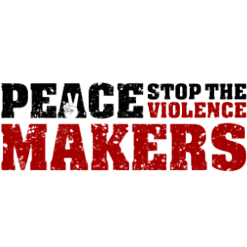Gallery
Do something. In the face of violence, apathy will be interpreted as acceptance by the perpetrators, the public, and—worse—the victims. Community members must take action; if we don’t, violence persists. Violence is an open attack on tolerance and acceptance
Reach out to allies from churches, schools, clubs, and other civic groups. Create a diverse coalition. Including children, police, and the media. Gather ideas from everyone, and get everyone involved. Others share your desire to stand against violence. There is power in numbers. Asking for help and organizing a group reduces personal fear and vulnerability, spreads the workload, and increases creativity and impact. Coalitions can stand up to—and isolate—those responsible for the violence. You and your allies can help educate others as you work to eradicate violence. Violence often creates an opportunity for a community’s first dialogue about unity, safety, and a sense of well-being. It can help bridge the gap between neighborhoods and law enforcement. More people than we imagine want to do something; they just need a little push.
Violent crime victims are especially vulnerable. If you’re a victim, ask for help. If you learn about a violent crime victim in your community, show support. Let victims know you care. Surround them with comfort and protection. Victims of violent crimes often feel terribly alone and afraid. Silence from the community, the faith community, and others amplifies their isolation; it also tacitly condones the act of violence. Victims need a strong, timely message that they are valued. Small acts of kindness — a phone call, a letter — can help. And because they may fear “the system,” some victims may welcome the presence of others at the police station or courthouse. Local organizations should provide such support, but individuals also may step forward.. You can, too!
An informed campaign improves its effectiveness. Eruptions of violence generally produce one of two reactions: apathy (“It’s just an isolated act by some kooks”) or fear (“The world is out of control”). Before reacting, communities need accurate information about those who are committing the violence. Every act of violence should be met with an act of love, peace and unity. Many communities hold alternative events, emphasizing strength in community and diversity. They have included forums, parades, and unity fairs featuring speakers, food, music, exhibits, and entertainment. These events give people a safe outlet for the frustration and anger they want to vent. Speak up and speak out in ways that draw attention away from hate, toward unity.
- An informed and unified community is the best defense against violence.
- You can spread tolerance through social media and websites, church bulletins, door-to-door fliers, letters to the editor, and print advertisements
An informed campaign improves its effectiveness. Eruptions of violence generally produce one of two reactions: apathy (“It’s just an isolated act by some kooks”) or fear (“The world is out of control”). Before reacting, communities need accurate information about those who are committing the violence. Every act of violence should be met with an act of love, peace, and unity. Many communities hold alternative events, emphasizing strength in community and diversity. They have included forums, parades, and unity fairs featuring speakers, food, music, exhibits, and entertainment. These events give people a safe outlet for the frustration and anger they want to vent.
Elected officials and other community leaders can be important allies. But some must overcome reluctance—and others, their own biases—before they’re able to take a stand. The fight against violence needs community leaders willing to take an active role. The support of mayors, police chiefs, college presidents, school principals, local clergy, business leaders, and others can help your community address the root causes of violence and help turn incidents into experiences from which your community can learn and heal as they work to reduce violence. When leaders step forward and act swiftly in the wake of an incident, victims feel supported, community members feel safe, and space for action and dialogue can grow.
Promote peaceful communities and address violence before another violent crime can occur Expand your comfort zone by reaching out to people outside your own group. Violence usually doesn’t strike communities from some distant place. It often begins at home, brewing silently under the surface. It can grow out of divided communities—communities where residents feel powerless or voiceless, communities with differences. The best cure for violence is a united community
Host a diversity, inclusion, peace, and unity day on campus. Reach out to young people who may be susceptible to group and peer pressures, either as participants or victims. Schools are an ideal environment to counter violence because they mix children of different backgrounds, place them on equal footing, and allow one-on-one interaction. Children also are naturally curious about people who are different.
Commit to disrupting violence at home, at school, in the workplace, and in faith communities. Acceptance, peace, and unity are fundamentally personal decisions. It comes from an attitude that is learnable and embraceable: a belief that every voice matters, that all people are valuable, and that no one is “less than.”
- It’s one of the most important steps toward breaking down the walls of silence that allow violence to grow. Luckily, we all possess the power to overcome our ignorance and fear and to influence our children, peers, and communities.
Contact
Get in Touch
Contact High Point Peacemakers today to learn more about our programs and how you can contribute to creating a safer and more peaceful community. Together, we can make a difference.
